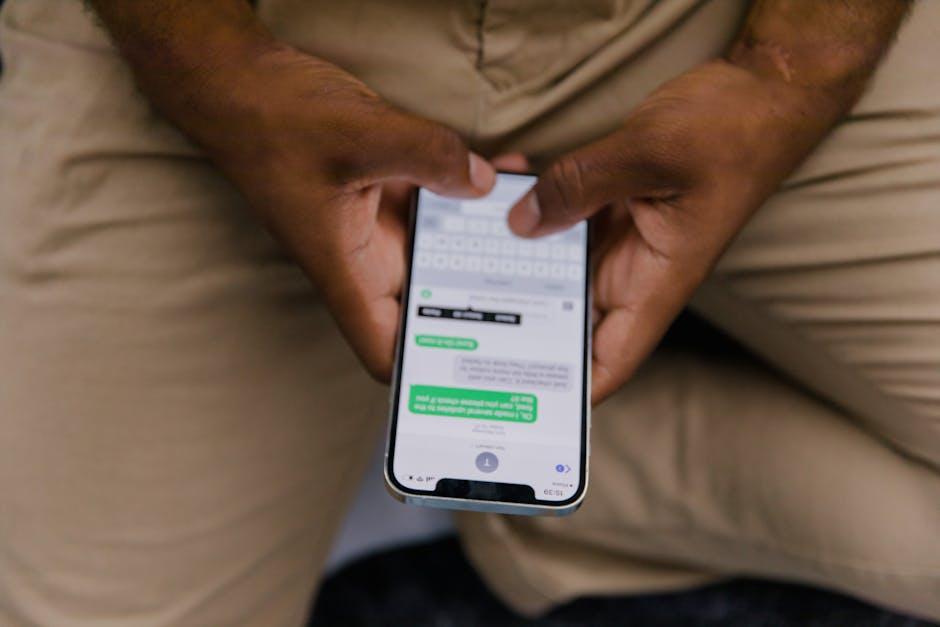In the digital age, where the hum of notifications and the glow of screens have become as familiar as the morning sun, a new narrative unfolds, weaving itself into the fabric of teenage life. Social media, with its promises of connection and community, stands at the forefront of this story, offering a virtual stage where adolescents can craft their identities and share their voices. Yet, beneath the surface of curated images and fleeting likes, a question lingers like an uninvited guest: Is this digital playground a breeding ground for anxiety among teens? As we delve into this modern conundrum, we find ourselves at the crossroads of innovation and introspection, exploring whether the very platforms designed to bring us together are, paradoxically, contributing to a growing sense of unease among the youth. Join us as we unravel the complexities of this pressing issue, examining the delicate balance between the benefits of social media and its potential pitfalls in the mental well-being of the next generation.
Exploring the Digital Landscape: How Social Media Shapes Teen Emotions
In today’s interconnected world, the influence of social media on teen emotions is undeniable. With a constant stream of updates, likes, and comments, platforms like Instagram, Snapchat, and TikTok have become integral to adolescent life. But as they navigate this digital terrain, teens are also grappling with heightened levels of anxiety. The pressure to curate a perfect online persona can lead to feelings of inadequacy, while the fear of missing out (FOMO) exacerbates stress. Social media can amplify insecurities by creating an environment where comparison is inevitable, and validation is sought through digital affirmations.
However, it’s crucial to recognize that social media is not solely responsible for these emotional shifts. Various factors contribute to teen anxiety, and technology is just one piece of the puzzle. Here are some considerations:
- Peer Pressure: The desire to fit in and be accepted by peers can drive teens to engage in unhealthy online behaviors.
- Lack of Digital Literacy: Understanding the curated nature of online content can help teens discern reality from illusion.
- Support Systems: Teens with strong support networks may be better equipped to handle online challenges.
While social media is a powerful tool for connection, it’s essential for teens, parents, and educators to approach it with mindfulness and balance, ensuring it enriches rather than detracts from mental well-being.

Unpacking the Anxiety Puzzle: Social Medias Role in Teen Stress
In the intricate maze of adolescent life, social media platforms stand as both a compass and a confounding puzzle. While these digital arenas offer teens a place to express themselves and connect with peers, they can also amplify feelings of anxiety and stress. The constant stream of notifications, likes, and comments may lead to an overwhelming pressure to maintain a certain image or status. Is the chase for online validation worth the emotional toll?
While not the sole culprit, social media undeniably plays a significant role in shaping the emotional landscape of today’s youth. As society navigates this digital age, understanding and addressing these factors becomes crucial in mitigating the anxiety puzzle faced by teens.

Navigating the Online World: Strategies for Healthier Social Media Use
In an era where social media platforms have become a staple in the lives of teenagers, understanding how to foster healthier online habits is crucial. It’s not just about limiting screen time; it’s about cultivating a mindful approach to digital interaction. Here are some strategies to consider:
- Curate Your Feed: Encourage teens to follow accounts that promote positivity and inspiration. The content they consume can significantly impact their mood and self-perception.
- Set Boundaries: Establish clear rules for social media use, such as no phones at the dinner table or limiting usage before bedtime. Consistent routines can help manage anxiety levels.
- Encourage Offline Connections: Promote activities that involve face-to-face interaction. Building strong real-world relationships can provide a support network that counters online pressures.
- Foster Open Dialogue: Create a safe space for teens to talk about their online experiences. Discussing their digital lives can help identify stressors and develop coping mechanisms.
By integrating these strategies, teens can navigate their digital environments with greater awareness and resilience, potentially reducing the anxiety often linked with social media use.

Empowering Teens: Building Resilience in the Age of Social Media
In today’s digital landscape, social media has become a double-edged sword for teenagers. On one hand, it offers unparalleled opportunities for connection and self-expression; on the other, it can amplify feelings of anxiety and inadequacy. The pressure to curate a ’perfect’ online persona can be overwhelming, often leading teens to compare themselves unfavorably to the seemingly flawless lives presented by peers and influencers. Moreover, the constant barrage of notifications and the fear of missing out (FOMO) can create a sense of urgency and stress that is difficult to escape.
However, the impact of social media on teen anxiety is not entirely negative. Many young people find solace and support through online communities that foster resilience and empathy. Here are some ways teens can leverage social media positively:
- Connecting with supportive communities: Finding groups that share similar interests or challenges can provide a sense of belonging.
- Access to mental health resources: Many platforms offer valuable information and tools for managing stress and anxiety.
- Encouraging self-expression: Creative outlets such as art, writing, and music shared online can boost self-esteem and confidence.
Ultimately, while social media can contribute to anxiety, it also offers pathways to build resilience if navigated mindfully.








